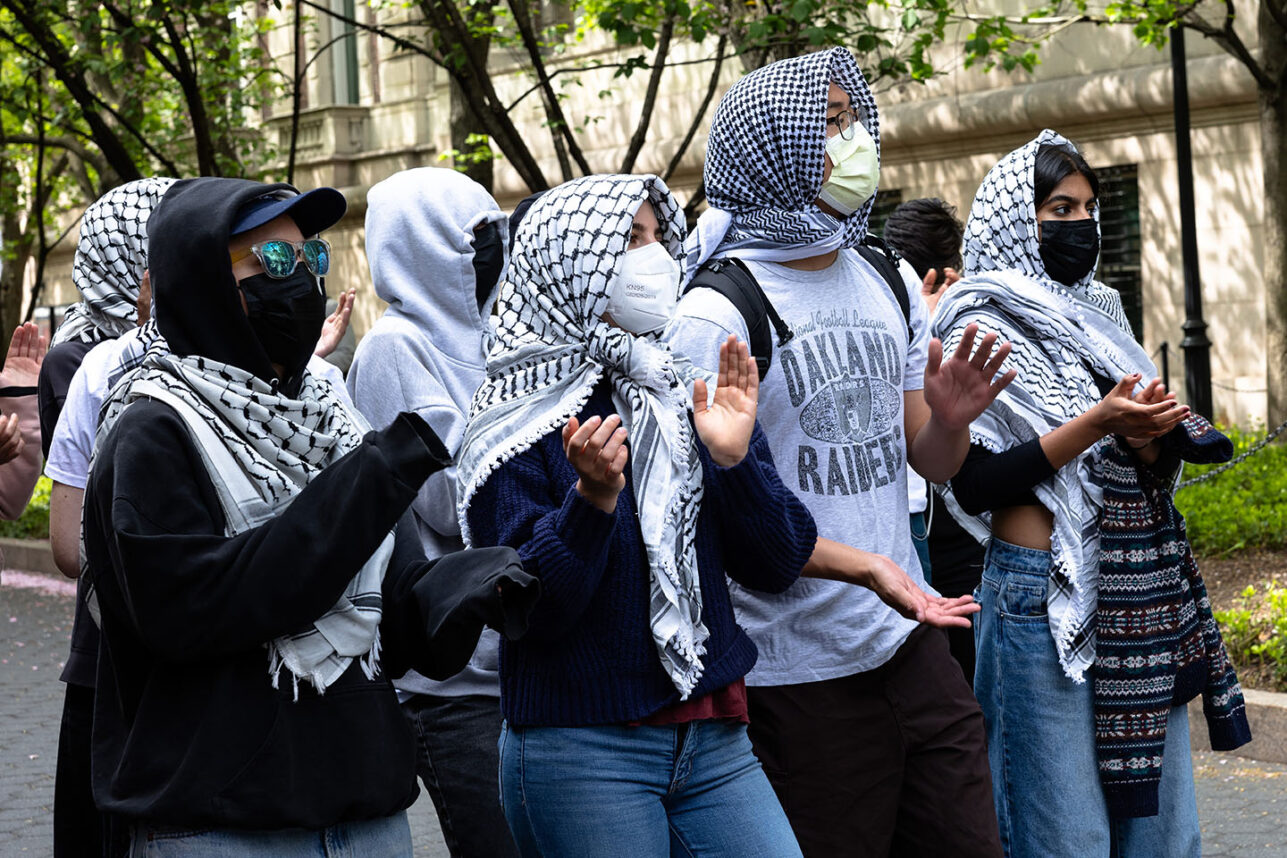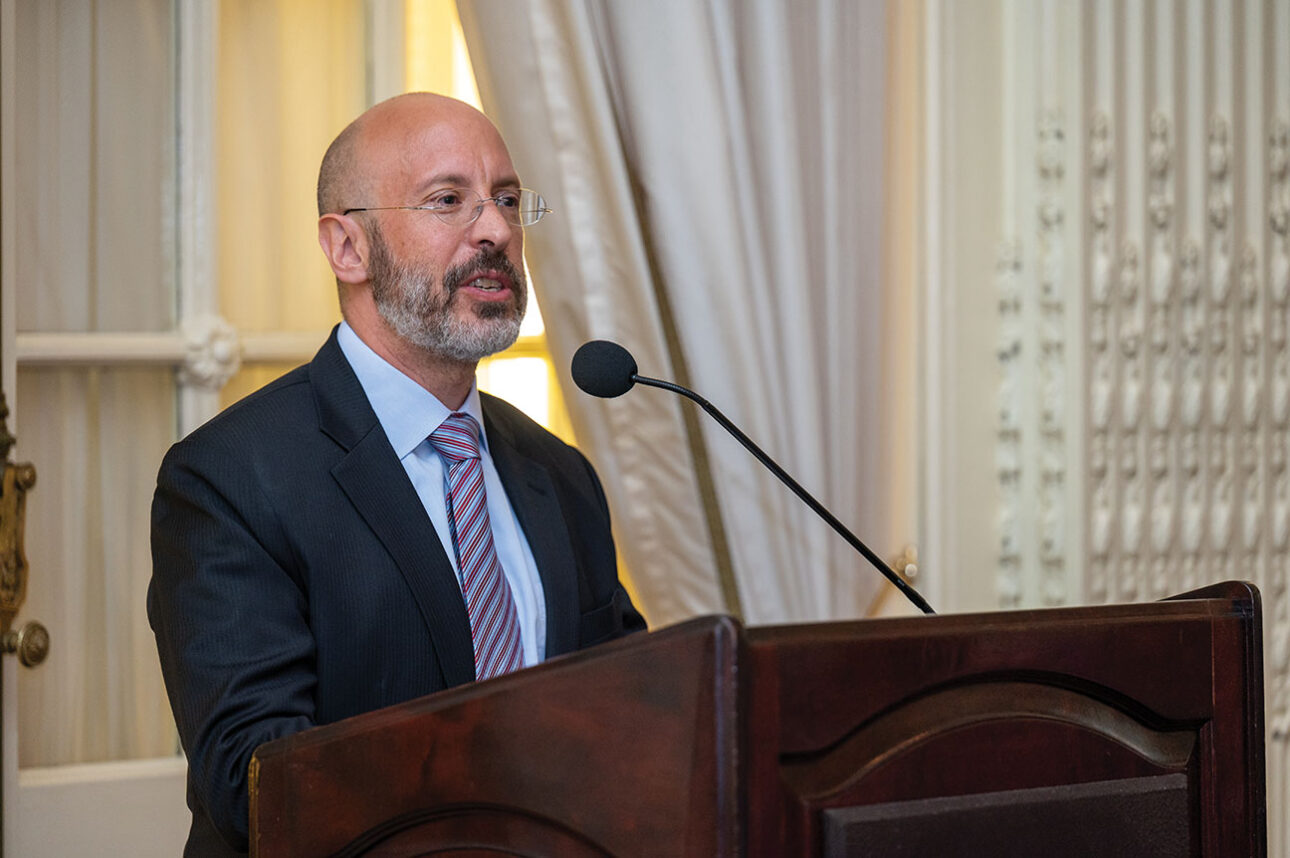Conductor Murry Sidlin was browsing through a table of used,
tattered books when he discovered a slender book about the Terezin
concentration camp that told an unusual musical story.
According to the book, Terezin held a disproportionate
number of artists and intellectuals. One inmate — Rafael Schachter of Prague —
organized a chorus of prisoners. This chorus performed Giuseppe Verdi’s Requiem
16 times between 1943 and 1944 — a feat that, for Sidlin, struck a particularly
poignant chord.Â
After three years of research, trips to Israel, Boston, the
Czech Republic and New York, interviews with survivors, and rehearsals with the
Oregon Symphony and the chorus of the Portland Opera, Sidlin has produced
“Defiant Requiem: Verdi at Terezin,” part concert, part documentary.
“It’s a concert drama,” Sidlin said. “It tells the story of
Schachter … as he taught [the requiem], produced it, conducted it.” In the
90-minute film, Sidlin recreates the chorus using members of the Portland Opera
and intersperses pieces of the history of Terezin in between the movements of
the Verdi masterpiece.Â
Little had been written about the Terezin chorus when Sidlin
began investigating, and he had a tough time finding survivors who remembered
Schachter. He posted a message on a survivor’s Web site asking for anyone who
remembered the Terezin chorus. His first breakthrough came when Schachter’s
niece, who was living in Israel, contacted him. Her mother told Sidlin about a
survivor, Edgar Krasa, who was living in the Boston area. Sidlin phoned Krasa
and asked him if the name Rafael Schachter meant anything to him.Â
“Well,” came the reply from Krasa, “I named my first born
child [after him].”Â
Sidlin started to perspire.Â
Krasa then proceeded to open up an entire world to Sidlin.
He told Sidlin about the shouting matches between Schachter and the Council of
Jewish Elders, the nominal Jewish governing body at the concentration camp,
whose members were convinced that Schachter’s chorus could only lead to
trouble. After the council instructed Schachter to disband his group, Schachter
assembled the chorus together.
“He said, ‘My intentions are to go ahead with this,'” Sidlin
said, recounting the story told to him by Krasa.
But Schachter offered to let chorus members opt out of the
chorus if they wished. All 150 stayed.Â
The chorus was disbanded twice when the Nazis deported
inmates to other death camps, and twice the devoted Schachter rebuilt it.Â
Sidlin also spoke to Edith Steiner-Kraus, a well-known
pianist who was interned in Terezin. She did not participate in the chorus but
had listened to it.
“I asked her when I sat with her, ‘Tell me about the quality
of the chorus,'” Sidlin said. “Her response was: ‘You would have been proud of
this chorus in any urban setting.'”Â
Sidlin would know. The 63-year-old dean of music at Catholic
University in Washington, D.C., is also an accomplished conductor and musician.
He was born in Baltimore to two Eastern European immigrants, who escaped Europe
before the Holocaust — his father from Riga, and his mother from Minsk.
Nevertheless, Sidlin’s paternal grandmother was killed in the Holocaust.
“My three sisters and I learned as much as we could [about
the Holocaust],” he said.Â
At age 6, he began studying the piano, learned trumpet at
age 8 an by the time he was 12, was convinced that he would be a conductor.
After attending the Peabody Conservatory and Cornell University, he began his
career as a professional conductor. Last year, he was named to his position at
Catholic University, and Catholic University Press is publishing the book by
Sidlin about Schachter.Â
The irony of Schachter’s choice of a Catholic requiem in a
Jewish ghetto was not lost on Sidlin, though he was puzzled by it at first.
“Of all the things that they could be doing, why do a work
so steeped in Catholic liturgy?” Sidlin asked. “I just tucked it away and
wondered about this.”
And then it dawned on him: “It really was one of those
bolt-upright-at-4 a.m. revelations. What if [Schachter] was using the text of
the mass to symbolize a strong message [to the Nazis]?”Â
Although Verdi’s lyrics were in Latin, they were the kinds
of words prisoners couldn’t ever say to their captors. “What Schachter was
saying was, ‘Sing to them what we cannot say to them,'” Sidlin said. “He said
it out loud — that’s one of the few quotes we have of him.”Â
In gray turtleneck shirts, chorus members in “Defiant
Requiem” echo the inmates when they sing — in Latin — “Grant them eternal rest,
Lord” and “Hear my prayer.”Â
Schachter was finally deported from Terezin to Auschwitz in
the fall of 1944. According to one account, Schachter could be seen heading toward
the gas chambers with four other musicians who were all interned at Terezin:
Gideon Klein, Victor Ullmann, Peter Haas and Hans Krasa (no relation to
Edgar).Â
Sidlin’s mission is, in many ways, to change the way people
listen to Verdi.
“I would like everyone — whenever they hear the Verdi
Requiem in the future — to know [about] the royal sons of bitches who tried to
wreck [Jewish] lives and [how Jewish inmates] stayed above it. It’s a
revelation about the requiem that Schachter provided.”   Â
“Defiant Requiem” will air on KCET on April 11 at 10 p.m. Article reprinted courtesy of The Forward.






















 More news and opinions than at a Shabbat dinner, right in your inbox.
More news and opinions than at a Shabbat dinner, right in your inbox.